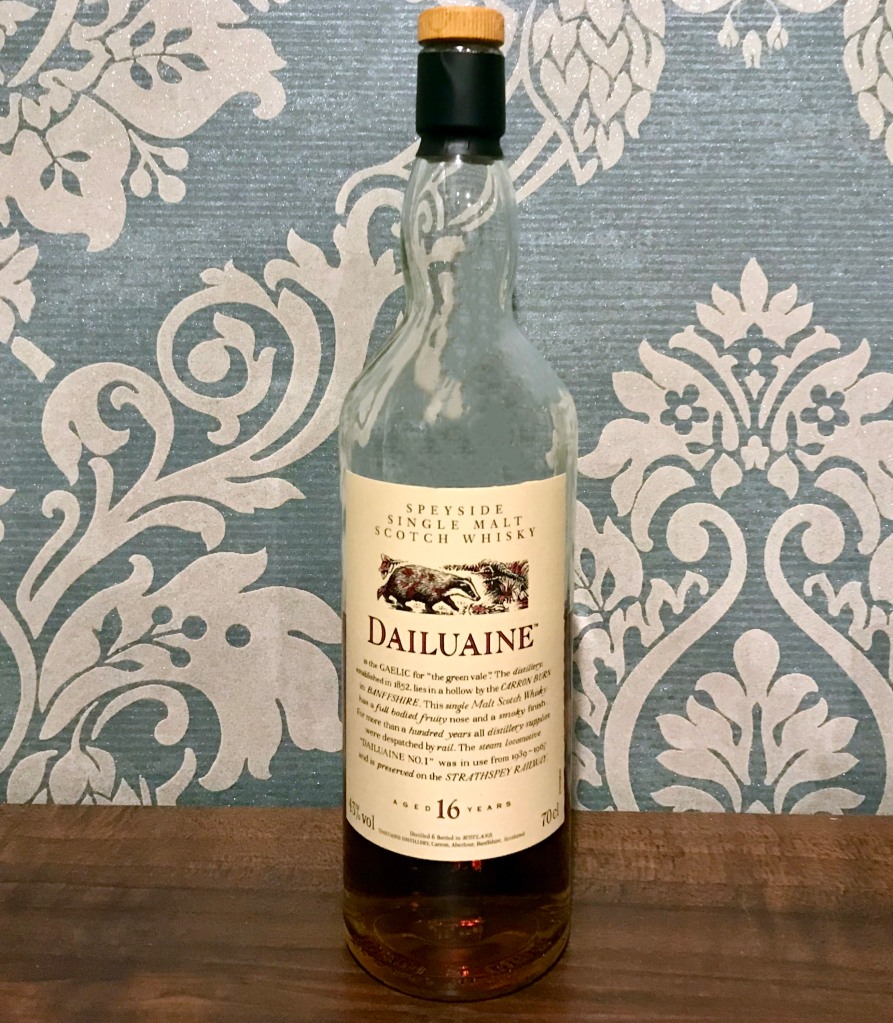Reviewed by: Ted
Mama, just killed a dram,
Put a glencairn against its neck,
Poured it out, now the bottle’s dead…
Avid Whisky Waffle followers may remember that I was recently musing about how I needed to bite the bullet and finish off a bottle of Dalwhinnie that I’d had sitting around for far too long. Well, you’ll be pleased to know that the world is now minus one bottle of Highland single malt. Just not my bottle…
So, I was visiting friends last night and at the end of the evening the host whipped out a bottle of Dalwhinnie he bought in Scotland recently-ish and declared an intent to finish it off between the group. Naturally, everyone declined (you’ll need to install a sarcasm filter to read that properly).

The bottle in question was the interestingly named Lizzie’s Dram, a limited edition distillery exclusive non age statement release. No, the Lizzie in question is not the Queen, but instead one Elizabeth Stewart. Working at Dalwhinnie for over 30 years, she was apparently a trailblazer for women in an historically male-dominated industry as one of the first female Scottish malt distillery operators. After her retirement in 2018, Diageo, owners of Dalwhinnie, chose to honour her contributions to the whisky industry by creating a special release in her name.
Lizzie’s Dram is aged exclusively in selected refill American white oak bourbon cask and released at 48% as a limited run of 7500 bottles. The colour is darker than you’d perhaps expect for refill bourbon casks, but then this is Diageo we’re talking about, who are quite fond of going to town with the E150a caramel colouring.
The nose is pure Dalwhinnie – very first thing I detected was that classic smell of apples. My companions at the table, more casual whisky drinkers than me, were quite effusive in their agreement and thankfully I was backed up by the bottle notes. See? We don’t always talk rubbish (mostly). Also to be found are lemons, straw, vanilla and green sapwood. The addition of a couple of drops of water also draws out some caramel. All in all quite a pleasant olfactory experience.

The mouth is a different kettle of fish. It’s very sharp for some reason, with a metallic, Myer lemon body going on. The whole effect is very bright across the palate, with a lingering finish. I think it’s kind of like sword swallowing – it’s pretty difficult and can impress your friends who don’t know the trick, but in reality it’s uncomfortable in the mouth and you’re glad when it’s over. A couple of drops of water soften the blow, but then annoyingly a bit of the pizzaz and drama disappears. A difficult dram indeed.
Look, this is a NAS we’re talking about, so it’s likely that a good chunk of the release is made with relatively young whisky. I suspect that some of the jaggy edges on the mouth would have been smoothed out if the barrels had been allowed to work their magic for a bit longer. It’s a shame really, because I enjoyed what was going on with the nose and wish it could have translated across the entire experience.
Thumbs up to Diageo and Dalwhinnie for celebrating the undeniable achievements of one of their own, thumbs down for not backing it up with an entirely worthy dram. Of course, this is just me grouching with my Whisky Waffle hat on. In the moment, with good company and a dram in hand, we killed that bottle like a cadre of smiling assassins. When it’s someone else’s bottle and they’re pouring generously, one should not protest too hard.
Any way the whisky flows…
**










